Is your lawn yellowing, or does your fertilizer seem not to be working? Then, it may be time to lime your yard. No matter how many nutrients you add to your soil, if the pH is too low, your grass will have trouble absorbing it. Let’s talk about the best way to lime your lawn, how to do it, and when it is needed.
What is Lime?
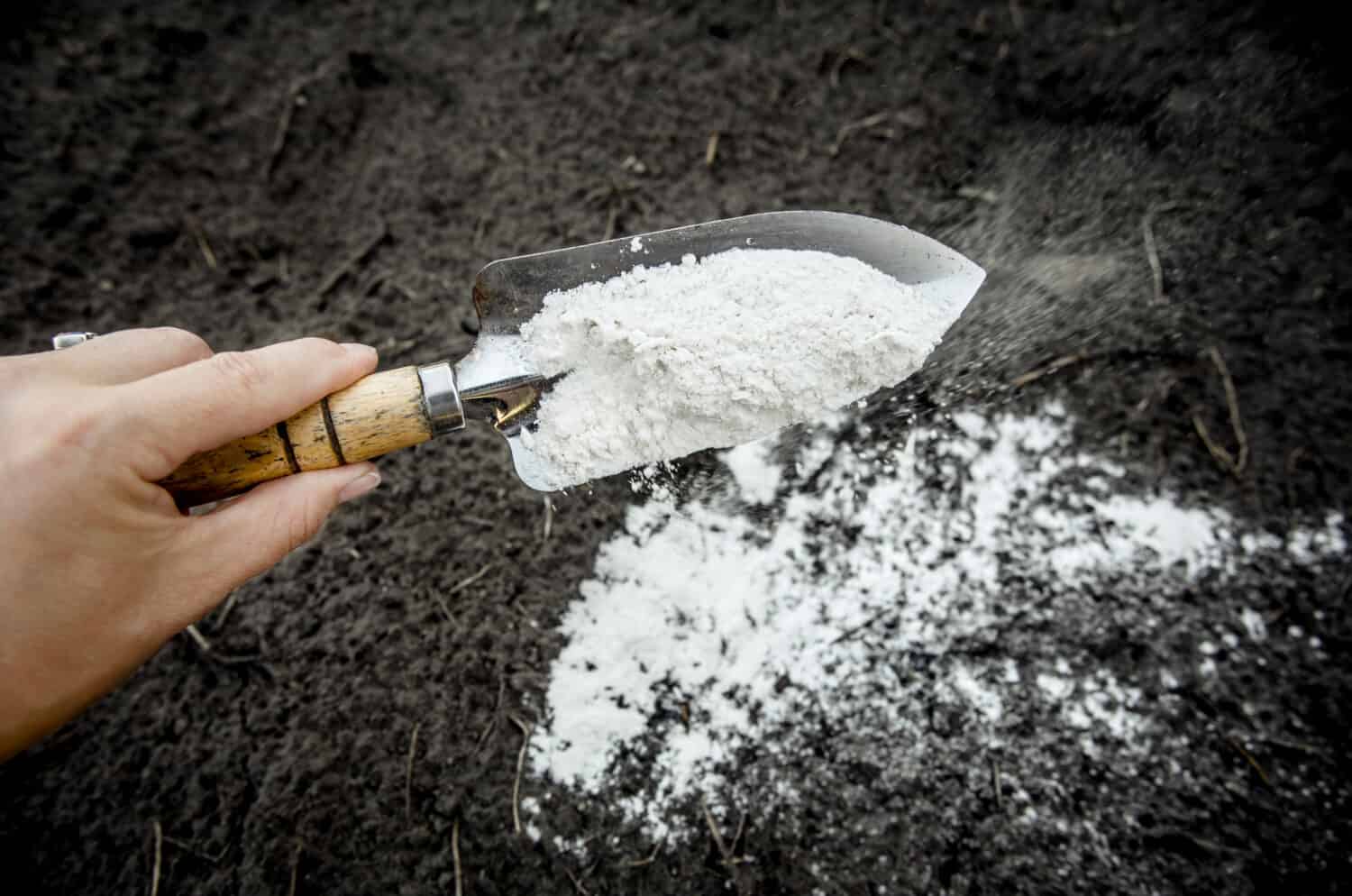
Lime for your lawn can be purchased in a fine, powder form or as granular pellets. Pellets have the advantage over powder because they do not blow away when spreading.
©FotoHelin/Shutterstock.com
Lime is essentially powdered or granular limestone rock. It naturally contains the compounds calcium carbonate and magnesium carbonate. These compounds help raise the pH of your soil so that it is less acidic. Making the soil more alkaline improves access to other nutrients in the soil that plants need.
Clues Your Lawn Needs Lime

You may want to check the pH levels if you have a yellowing, weedy lawn or if your grass isn’t recovering after a dry spell.
©SingjaiStocker/Shutterstock.com
There are a few “symptoms” to look for to see if your yard needs liming. First, if you have sandy or clay soil, you can be confident that your lawn will benefit from lime. These types of soil tend to be more acidic. Second, if your lawn is yellowing or not responding well to fertilizer. If your soil is too acidic, it will hinder nutrient absorption for your grass. Also, if you experience a lot of rain—or acid rain, that is a good indication you should check your pH levels. And, if you go through a dry period or drought, and your lawn just isn’t recovering from it, you should check the levels.
The best step you can take is to conduct a soil test. This will tell you definitively what the pH levels of your lawn are. The pH scale ranges from zero to 14, with zero being the most acidic and 14 being the most basic (alkaline). Most grass types prefer ranges between 5.8 and 7.2. But it also depends on the grass.
Grass Types and Preferred pH
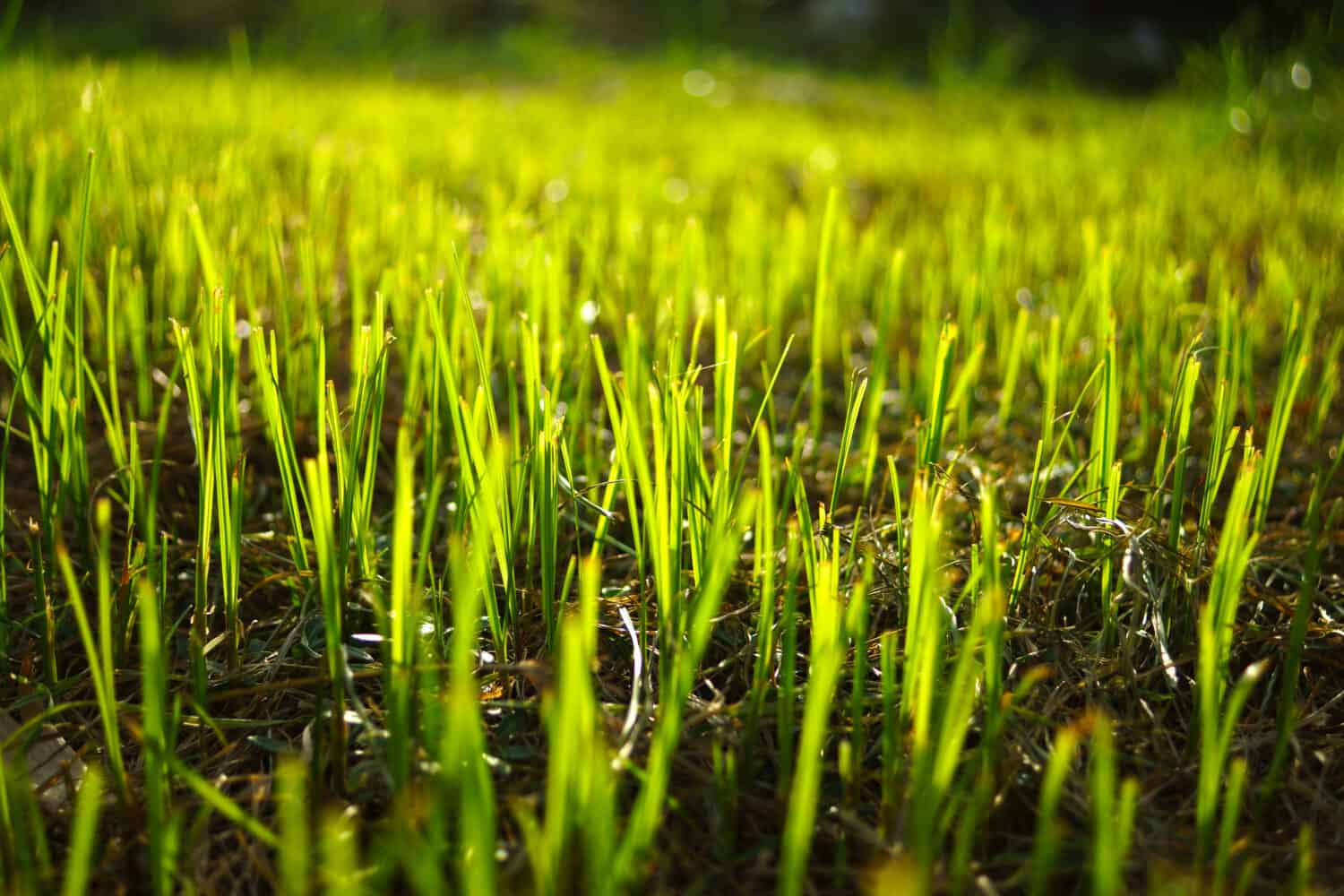
Most grass types prefer pH ranges between 5.8 and 7.2. However, it also depends on soil types and climate.
©NOPPHARAT9889/Shutterstock.com
Here are 10 of the most popular grass types for your lawn and the specific pH they thrive in:
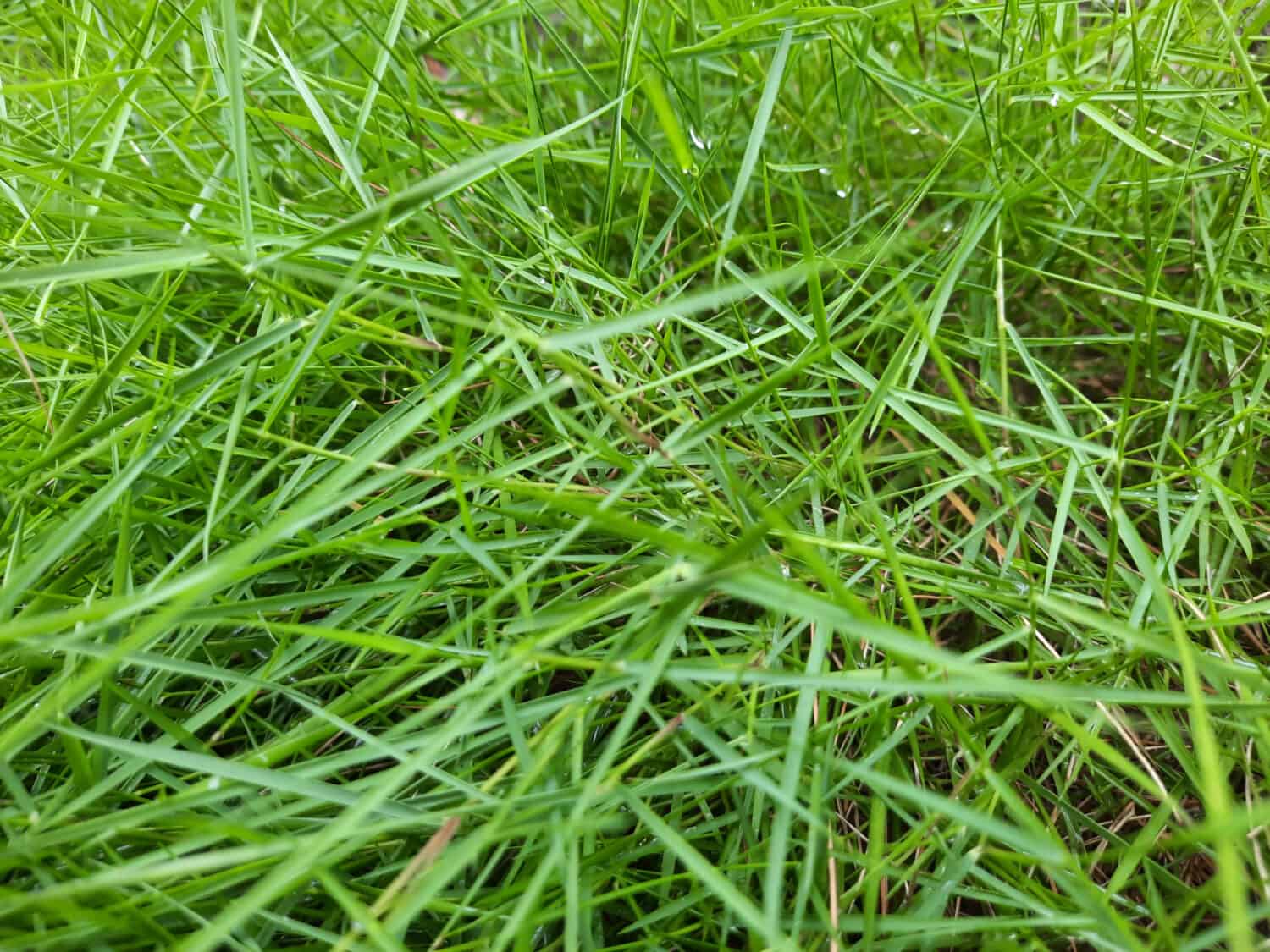
Bentgrass is the choice of many golf courses, grass tennis courts, and lawn bowling facilities.
©Funbee/Shutterstock.com
- Bentgrass is popular, especially on golf courses, because it has slow growth and a soft texture. Since it has adapted to more acidic soil, bentgrass needs a pH range of 6.0-6.8.
- Bermuda grass is fantastic for high-traffic lawns (if you have kids or pets). Though it needs frequent watering, it does well in warm climates. A good pH level for this grass type is 6.0-6.5.
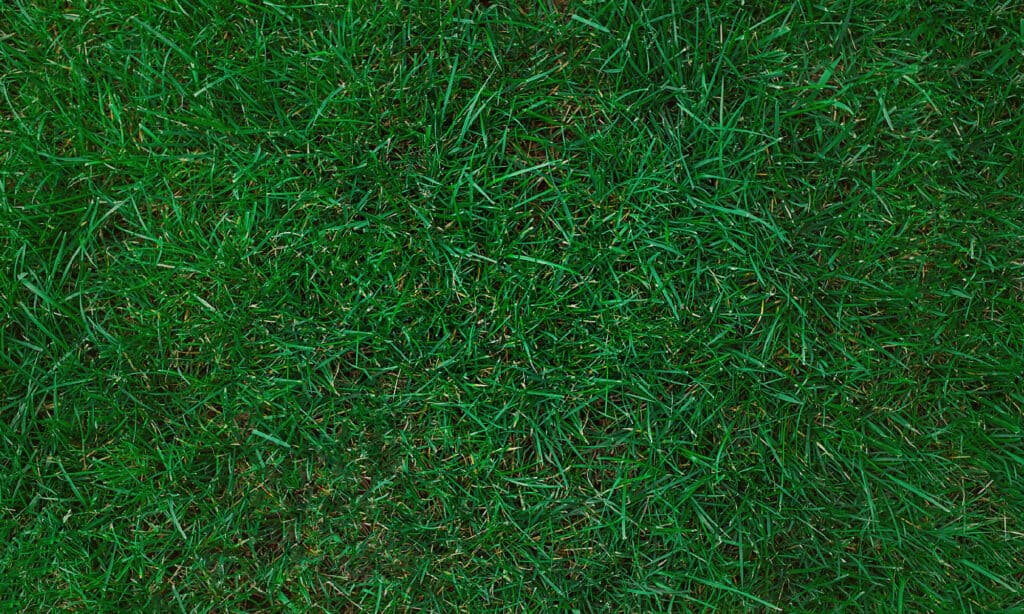
Kentucky Bluegrass does well in cooler climates and has a soft texture and deep green color.
©iStock.com/KacieBuccieri
- Kentucky Bluegrass is the favorite in northern states as it tolerates cooler temperatures. However, it thrives in very sunny yards with a pH level of 6.0-7.5.
- Centipede grass is not full of creepy crawlies—don’t worry. This grass provides a thick turf that requires very little maintenance. It has also adapted to more acidic soil, with ranges between 5.0-6.0.
- Dichondra grass is unique because it doesn’t grow like traditional blades of grass. Instead, it expands as little round leaves. A very interesting type of lawn, indeed! It does well in sandy soil and is perfect for owners looking for dense ground covering. The preferred pH levels are 6.1-7.8.
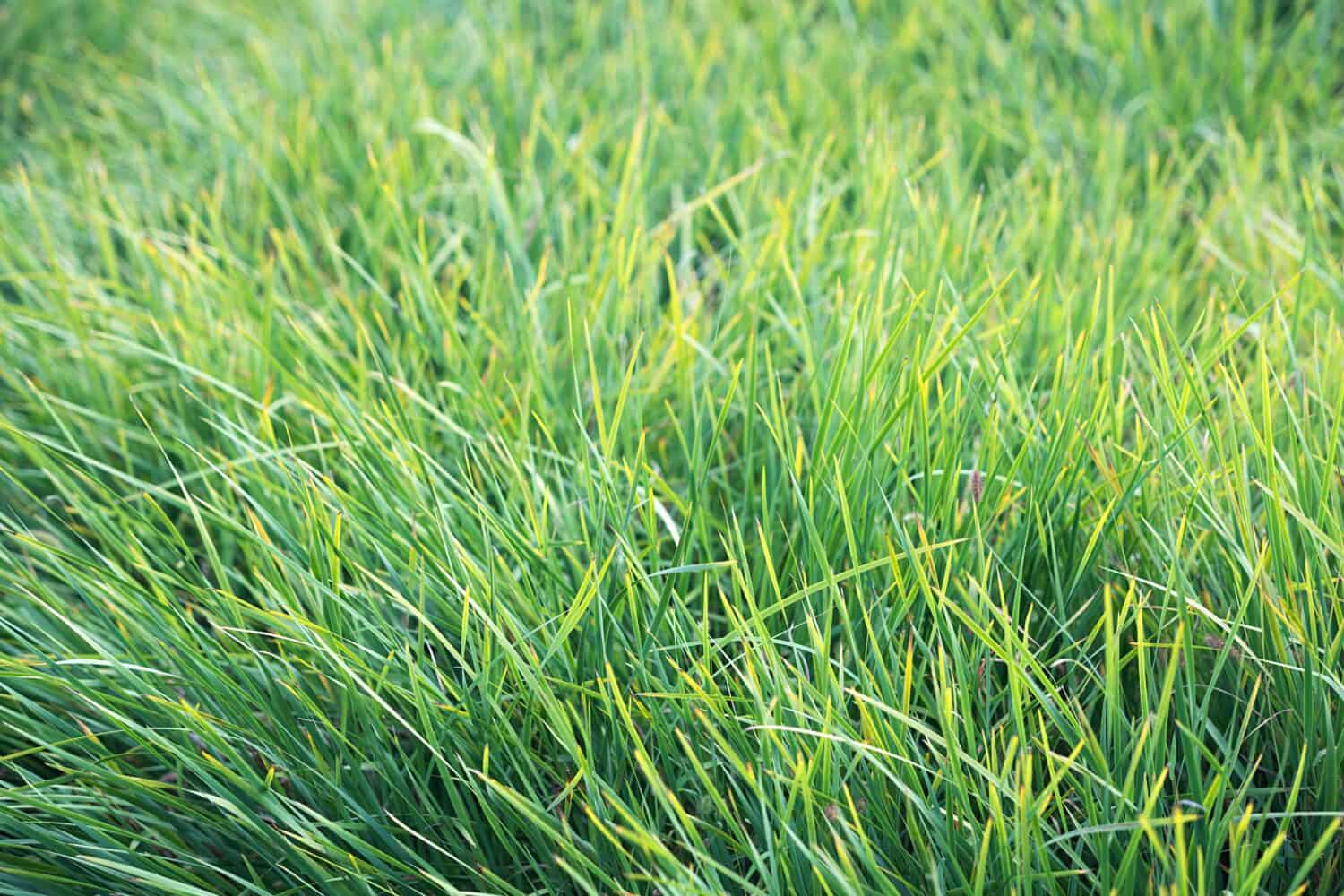
Ryegrass is a fine-bladed grass with a quick germination rate and fast establishment.
©dajingjing/Shutterstock.com
- Fine Fescue grass presents as fine, needle-like blades. It’s fantastic for cooler climates and doesn’t mind shade. For this grass to thrive, you’re looking at pH levels of 6.0-6.5.
- Floratam grass flourishes in hot and humid climates. It’s the preferred grass type for homes along the Gulf Coast. With a rich, dark green color and coarsely textured, Floratam grass needs a pH between 6.0-7.5 to survive.
- Ryegrass is great among northern states with short growing seasons. Ryegrass germinates quickly and has rapid growth. Plus, it’s pretty easy to maintain if you keep pH levels between 5.0-8.3.
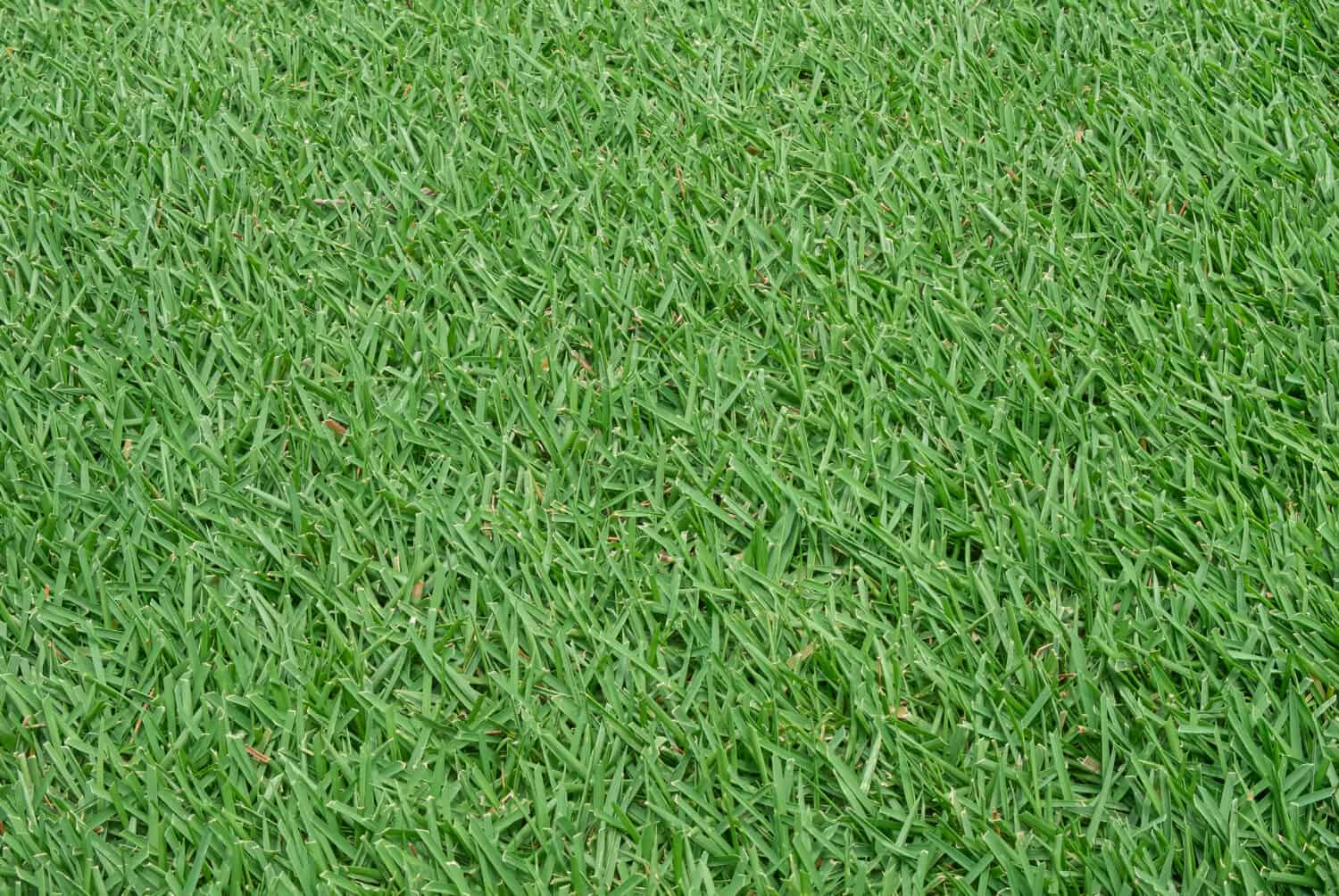
Zoysia grass thrives in temperatures above 80°F. It’s an aggressively growing grass and will often choke out weeds.
©Oldboys/Shutterstock.com
- Tall Fescue grass is a popular pick for athletic fields and areas of high traffic. It’s not usually incorporated in residential grass mixes since people think it looks a little weedy when long. A suitable pH for this grass is 5.5-7.5.
- Zoysia grass is hardy and tolerates droughts and heat better than other seed varieties. It has a coarse texture but doesn’t need daily watering and has thick coverage. Look for pH levels of 6.0-6.5 for this type.
Best Time to Lime Your Yard
Spring and fall are the best times to apply lime. Lime can take months to entirely change the pH of your lawn (though some companies sell fast-acting lime). So, letting the lime sit over the winter, allowing the rain, ice, and snow melt to break down the lime completely into the soil is beneficial. The spring is also advantageous, as it gives lime to break down before the summer when you want to have a fantastic yard. However, don’t apply lime right before a rainstorm, as heavy rain may wash the granules away before working into the soil.
How to Apply Lime
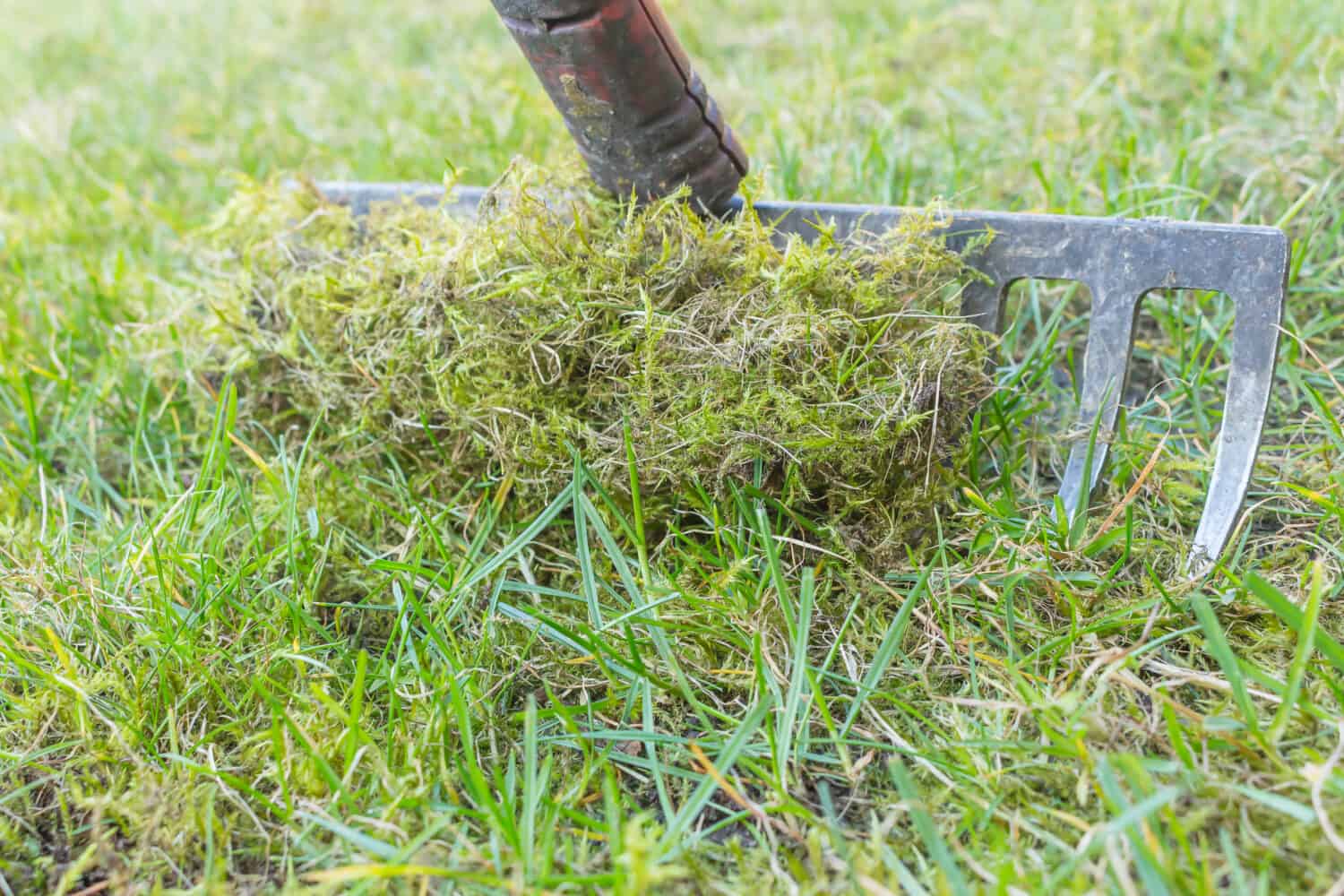
Lawn moss may be a sign you need lime.
©philmillster/Shutterstock.com
When you conduct a soil test, it will recommend how much lime is required to raise the pH of your lawn. The test will also give you options on fertilizers to boost your soil’s nutrients.
Next, aerate your lawn. This will help the lime reach deep into the soil and yield the finest results. Lime comes in both powder form and granular form. Most people prefer the granular form because it works into the soil more efficiently and doesn’t blow or wash away.
Use a spreader to distribute the lime evenly. Powdered lime can be hard on a drop spreader, often clogging or bridging over the outlets. Instead, consider a spinner-type spreader and stir the hopper frequently as you disperse the lime. With pellet/granular lime, you can easily use a drop or spinner spreader.
You’ll want to apply the lime in a criss-cross pattern. So, apply half the lime in rows going north to south on the lawn. Then, spread the remaining lime in rows going east to west. This will guarantee the lawn is covered entirely and evenly.
When Will the Lime Start Working?
It can take many months to even a year or two to adjust the pH in your soil fully. You may need to do another treatment depending on how acidic it is. Check your pH levels annually, and apply more lime the following year if needed. But remember, it can take up to two years for your lime to work down two or three inches into the soil. A good rule of thumb for applying maintenance lime is every 3-5 years.
When Should I Mow My Lawn?
You may be wondering about when you should mow your lawn–before or after you lime it–and how long you’d wait if you mow it afterward. If you decide to go with liming in the fall, your lawn will not exhibit as much growth by that time. It’s not necessary to mow it unless it’s extremely long or thick. If the latter is the case, it’s best to go ahead and mow your lawn first.
Once you’ve applied lime, you will want to wait for it to settle into the soil before mowing. It’s advisable to wait 1-2 days, with 2 days being the preferred time.
Final Thoughts on Liming

A good rule of thumb for applying maintenance lime is every 3-5 years.
©Mikhailov Studio/Shutterstock.com
Whether you have sandy soil, leaching from heavy rains, or too much ammoniacal nitrogen fertilizer applied, we all face acidic soil at some point. Thankfully, by following the best way to lime your yard, you can quickly rejuvenate your soil and give your grass access to the nutrients it needs to be thick and beautiful.
Thank you for reading! Have some feedback for us? Contact the AZ Animals editorial team.







